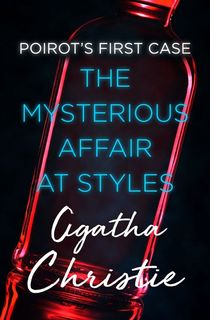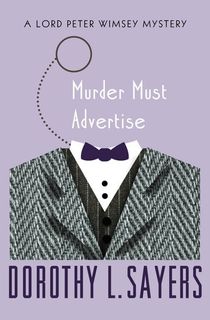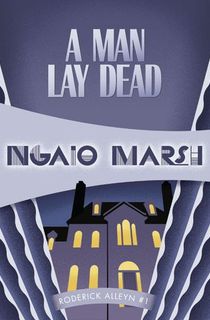Between the end of the First World War and the start of the Second, writers in Britain and the U.S. created some of the greatest mystery novels and most memorable sleuths in history. Little wonder the period came to be known as The Golden Age of Detective Fiction.
The shockwaves of the First World War reverberated through the United Kingdom long after the conflict had been brought to a close in 1918. In the previous four years, a million British servicemen had lost their lives. Confidence in the ruling class had been shattered and what had once been the wealthiest industrial nation on the planet was close to ruin. The people of the British Isles wanted to escape the chaos and uncertainty. They would find a welcome haven from their troubles in the least likely of all places—murder. Or, at least a sanitized, fictional version of it.
Inspired by Arthur Conan Doyle’s Sherlock Holmes and other popular detectives of what, for many British people, now seemed the paradise of the Edwardian era, a new wave of writers began to weave together a glowing, cozy world in which their fellow citizens could immerse themselves. It was a place of country houses, cruise liners, theatres, garden parties, and luxury resort hotels; of smartly dressed, affluent people who never seemed to have to work too hard and were always only a day away from the next cocktail party. It might all have been a little dull except that, within the first few pages, one of these well-spoken ladies and gentlemen was almost certain to wind up dead.
When was the Golden Age of Detective Fiction?
The exact dates of the Golden Age are a matter of fierce debate (the critic who coined the phrase, Howard Haycroft, felt it applied only to the 1920s), but let us settle on it beginning—as Haycroft would have it—with the 1920 publication of Agatha Christie’s first Hercule Poirot novel, The Affair at Styles and ending when Nazi Germany’s invasion of Poland in 1939 once again plunged Europe into war and Dorothy L. Sayers—shocked by the unfolding horror—retired from crime writing for good, taking her great sleuth Lord Peter Wimsey (described by his creator as a cross between Fred Astaire and Bertie Wooster) with her.

The Mysterious Affair at Styles

Murder Must Advertise
Of course, many of the writers of the Golden Age—such as Christie, Margery Allingham, Patricia Wentworth, Erle Stanley Gardner, and Rex Stout—would go on producing great mystery books for decades after Hitler was finally defeated. They’d be joined by others following their style and tradition such as P.D. James and Caroline Graham. Yet it’s fair to say that, just as World War One had destroyed the tweed-clad, gentlemanly environment of Holmes and Watson, so the Second World War had blown apart the safe, leisurely domain of Albert Campion and Miss Maude Silver.
Detective fiction had moved on, influenced by hard-boiled Americans such as Raymond Chandler, James M. Cain, and the often overlooked “Dorothy Parker of detective fiction”, Craig Rice (check out her 1944 mystery Home Sweet Homicide—it’s a gem). Though they would remain extremely popular with readers, Christie and Co. now appeared old-fashioned and out of date. They were playing Dixieland jazz in a rock n roll world.

Golden Age of Detective Fiction Aesthetic

There is more to The Golden Age than just dates, though. There is a question, too of style, setting, and content. Dashiell Hammett was writing detective tales in the 1930s, but they are not Golden Age stories. They are too gritty and violent, with PI’s who have hangovers, bad breath, and bruised knuckles. The writers of the Golden Age were generally upper-middle-class and so are their murder victims, suspects and sleuths. You can no more picture Miss Marple or Inspector Alleyn cracking a suspect’s skull with the butt of a revolver than you can Winston Churchill break-dancing. In Golden Age mysteries everybody, even the homicidal maniacs, know how to knot a bow tie and use a pair of asparagus tongs.

A Man Lay Dead
The Golden Age writers were—like the characters they wrote of—a sociable bunch. In Britain, they formed their own society, The Detection Club. One of its foremost members, Ronald Knox (author of the Miles Bredon mysteries—the best of them 1934’s Still Dead) wrote that “A detective story must have as its main interest the unraveling of a mystery; a mystery whose elements are clearly presented to the reader”. This was a key to defining the Golden Age. It was a belief shared by writers as diverse as the flamboyant Roman Catholic Englishman G.K. Chesterton (creator of Father Brown) and the two bookish Jewish cousins from Brooklyn who formed the writer known as Ellery Queen.

Ask a Policeman

The stories of the Golden Age are whodunnits, crime puzzles with clues and red herrings, and false trails that challenge the reader—literally in the case of Ellery Queen—to identify the criminal before the detective does. Whether they are locked room mysteries (the best perhaps John Dickson Carr’s The Hollow Man), tales of armchair detection (such as the sparklingly clever Anthony Berkley novel The Poisoned Chocolate Case), or slayings at country houses that have been cut off by a storm (a crowded field to choose from, but Ethel Lina White’s Some Must Watch is rather good), the story is played out in an orderly, logical fashion and—in 99% of cases—the criminal is identified and punished, the mess is cleaned up and everything returns to the way it was before. This holds true as much in the swish New York world of Rex Stout’s gourmet detective Nero Wolfe as in the prim village of St. Mary Mead that is home to Jane Marple.

The Poisoned Chocolates Case

The Hollow Man
The massive popularity of mystery fiction during the Golden Age created huge opportunities for writers as publishers rushed to satisfy demand. The results were not always good. Many books were formulaic, populated by one-dimensional characters, and littered with ugly class and racial stereotypes. Fine work was often buried amidst the dross. As a consequence, some great novels of the Golden Age are unfairly forgotten. Amongst those we might number the Anthony Bathurst mysteries of Brian Flynn (The Mystery of the Peacock’s Eye is a Golden Age classic featuring the crown prince of a made-up middle European country, the annual ball of a fox hunting society, and cyanide) and Christopher Bush’s excellent Ludovic Travers series (Dancing Death featuring a country house cut off—what else!—by a blizzard and a guest with a dagger through the heart is as satisfyingly plotted a whodunnit as you’ll find).
Not all the mystery writing of The Golden Age glitters, but there is plenty that does, and brightly, too.


